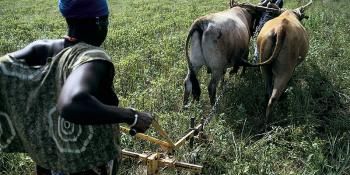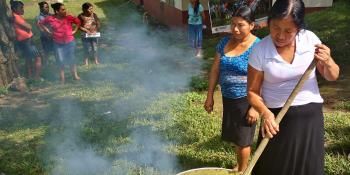How climate-smart is Southeast Asian agriculture?

Climate-smart agriculture in Southeast Asia is helping communities to look for localized solutions to climate change challenges in their area.
Different countries experience climate change in different ways. Some countries may report drier seasons, while other countries experience more rains and floods. The climate may be confusing, however it is the reality with which the world has to deal.
Take the case of Southeast Asia. Some countries, like Vietnam, Lao PDR and Cambodia, have to deal with the impacts of climate change on the Mekong River, a major water resource. On the other hand, Malaysia, Singapore, Brunei, Indonesia, East Timor and the Philippines have to deal with the increasing intensity of typhoons and severe weather disturbances coming from the sea.
On the local level, communities within the same country could even experience different impacts of climate change. Coastal cities have to deal with saltwater intrusion and rising sea levels, while upland communities may experience landslides and erosion with the strong rains. In addition, each community also has to deal with other environmental and economic conditions, such as fluctuating market prices of crops.
Different countries, cities, changes
How then should a region like Southeast Asia adapt to climate change? The different contexts of communities lead people to look for localized solutions, because what works in a particular town may not be as effective in another place.
This is especially true in agriculture, which is largely dependent on the climate. Although agriculture is increasingly recognized as a contributor to climate change, researchers also acknowledge that agriculture has the potential to help reduce greenhouse gas emissions. It is on this premise that climate-smart agriculture (CSA) comes in.
The Food and Agriculture Organization of the United Nations (FAO) defines CSA using the three pillars of food security, climate change adaptation and climate change mitigation. CSA contributes to the food security of the community, as it promotes sustainable increases in agricultural productivity and the incomes of people. CSA also helps build the resilience of the community and mitigate climate change by reducing greenhouse gas emissions in the production process.
Different ‘climate-smartness’ on the ground
The CGIAR Research Program on Climate Change, Agriculture and Food Security in Southeast Asia (CCAFS SEA) has established six Climate-Smart Villages (CSVs) in Vietnam, Lao PDR and Cambodia. These six villages were identified as high risk areas, which experience different climate change challenges.
Using a participatory approach, researchers and village representatives identified climate-smart interventions that would best suit each village. They introduced these technologies and practices to the community, encouraging women and other more vulnerable groups to participate in the activities. Both researchers and villagers monitor and evaluate the activities done in the village, so they fully understand how these practices improve food security, adaptation and mitigation.
A participatory approach increases people’s awareness of the existing conditions in their community and brings together scientific and local knowledge to address climate challenges. With the community involved, the scientists could better understand how the people adapted in the past, and which practices and technologies worked in their community.
Contour farming is one example of CSA practices being done in the Philippines. This ensures that upland farmers can prevent landslides and conserve the soil without sacrificing their yields and incomes. Photo: Eduviges S. Saway (ICRAF)
The CSV approach also integrates practices, policies and institutions to attain climate change adaptation, mitigation and food security. Intervention activities in CSVs may fall under the following categories:
Weather-smart activities usually provide weather information to the farmers so they would be able to make better decisions regarding their farming. Activities that are carbon-smart reduce or even remove greenhouse gas emissions from the production process. Nutrient- and pest-smart practices are those that maintain sustainability while ensuring nutrient and pest management. Those that are energy-smart promote energy conservation. Knowledge-smart activities promote information and knowledge sharing among the different stakeholders, including partners, the market and consumers.
How climate-smart is your community?
What do the CSVs and CSA have to do with other villages that are not CSVs? Considering that the village is the smallest political unit in many Southeast Asian countries, CCAFS SEA aims to find what works in a specific village and then scale it up to other villages under similar conditions with the CSV project.
Three countries are targeted for future expansion, including Indonesia (wherein oil palm plantations are a major driver of deforestation), the Philippines (a country highly threatened by sea level rise) and Myanmar (which largely depends on rice-based farming systems). Communities in South Asia, Africa and Latin America could also learn from the current CSVs and adapt these lessons in their own areas.
It is important to note that for a certain practice to work, it should be based on the local conditions. It does not offer a magic tool or a one-size-fits-all solution that would solve all climate change-related challenges, nor does it all bring increased productivity to farmers. Instead, CSA involves figuring out what works for which communities, so the people can address issues specific to their own locale.
What may work for others may not work for you. But you will eventually find what is climate-smart for you.
Read more:
- New guidance for climate-smart agriculture in Southeast Asia
- Climate change and agriculture: Is it a gloom and doom scenario?
Flipping the issue: agriculture contributes to climate change?
Amy Cruz is the junior communications specialist for the World Agroforestry Centre Philippines. She is also a communication consultant with the CCAFS SEA program.




